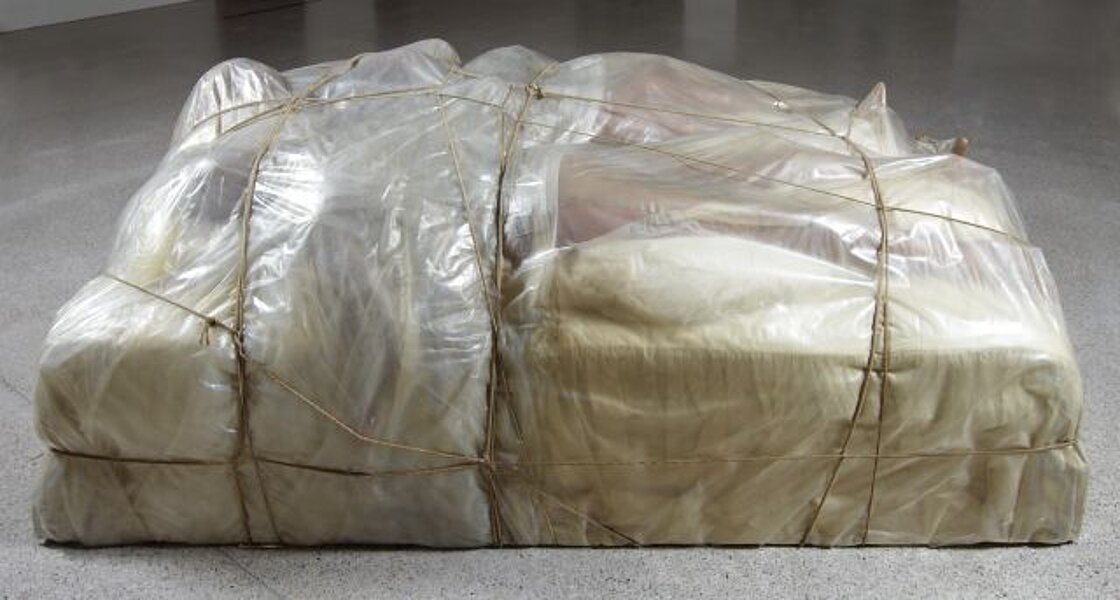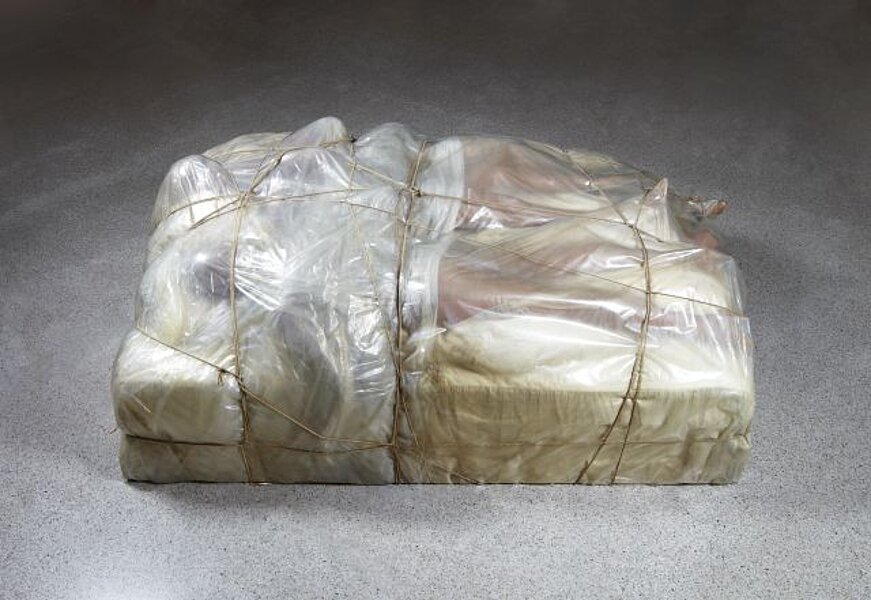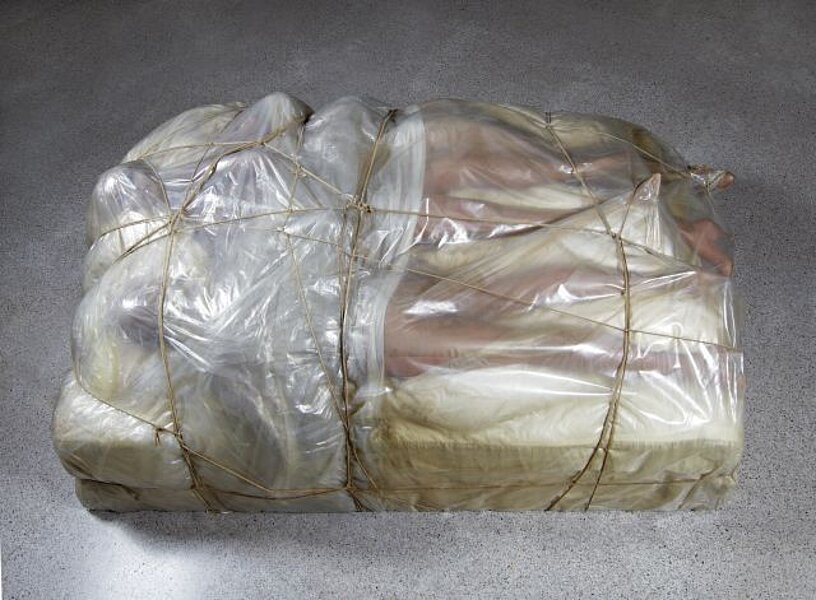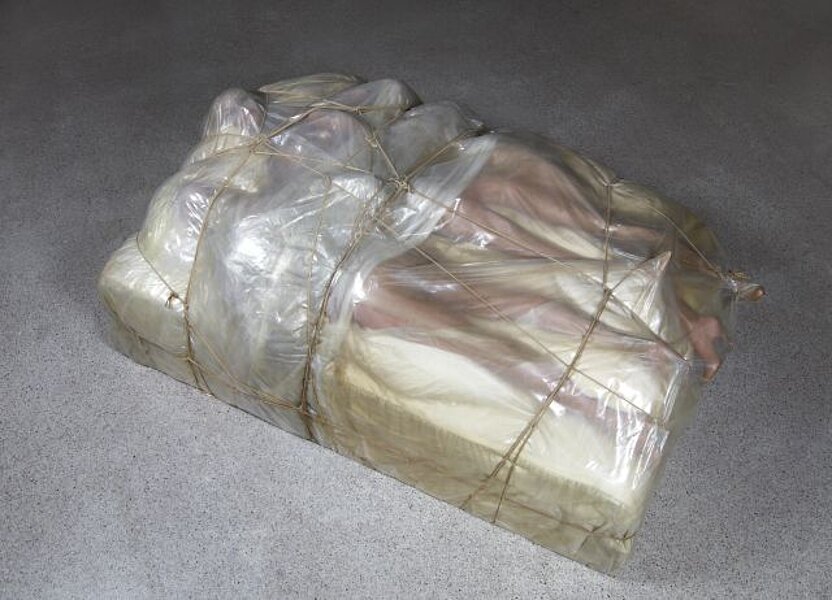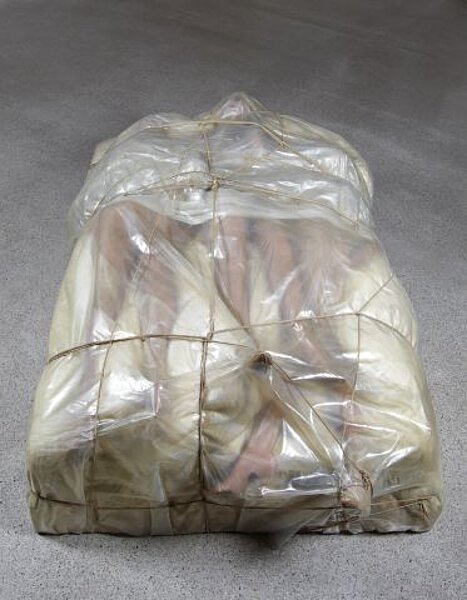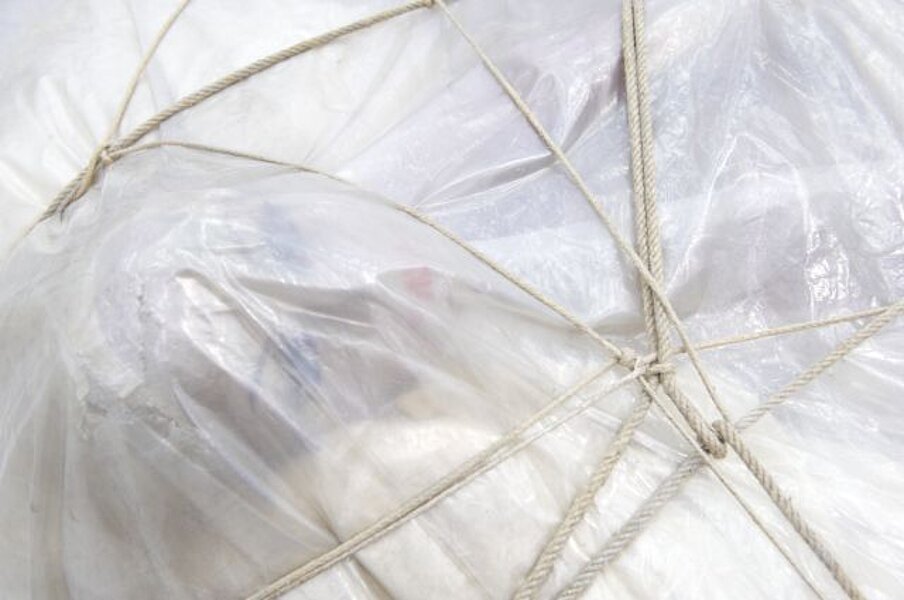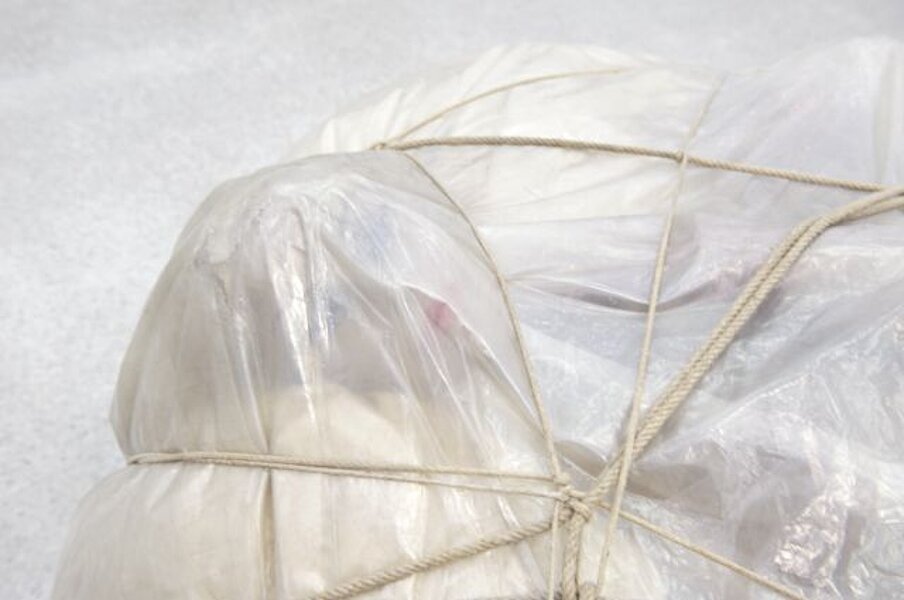
Christo
Wrapped Mannequins on a Bed
1963
| Object description | Mannequins wrapped in transparent plastic sheeting on a bed |
|---|---|
| Dimensions |
Objektmaß:
height: 90 cm,
width: 220 cm,
depth: 145 cm
|
| Year of acquisition | 1978 |
| Inventory number | P 121/0 |
| Creditline | mumok - Museum moderner Kunst Stiftung Ludwig Wien, ehemals Sammlung Hahn, Köln |
| Rights reference | Christo and Jeanne-Claude Foundation |
| Further information about the person | Christo [GND] |
| Literature |
I Love Pop. Europa-Usa anni '60. Mitologie del quotidiano Museum moderner Kunst Stiftung Ludwig Wien The Uncanny, by Mike Kelley, Artist Nouveau Réalisme. Schwerpunkte der Sammlung museum moderner kunst.SAMMLUNG HAHN |
We know Bulgarian artist Christo mainly for his spectacular work wrapping and reimagining buildings, parks, and whole landscapes, which he undertook together with his wife Jeanne-Claude, who died in 2009. His most recent project of this kind, the Floating Pears on Lake Iseo in Italy in 2016, drew the crowds. Many thousands of visitors walked along Christo‘s orange walkways on the water linking the mainland with the islands in the lake. Christo’s career began in the 1960s in Paris, where he wrapped various objects like cans, bottles, and boxes, thus hiding them from our direct gaze tied up in packaging. But as he never wrapped these objects to make them completely unrecognizable, he ensured that the viewers remained curious. This strategy might be called “revealing through concealing.” The "Wrapped Mannequins on a Bed" adhere to this principle. This work was made before a live audience in 1963 and was part of a whole series in which Christo wrapped shop-window mannequins, statutes or—for a short time—real people. These works were inspired by a visit to the studio of sculptor Alberto Giacometti, about which Christo often spoke enthusiastically: “All of his working sculptures were covered to prevent drying. The cloth made the figures anonymous, ambiguous. That fascinated me. I was impressed that the forms were no longer male or female. They became unknown. … I used many layers of clear plastic. It made some forms visible, some less visible. You would look and think, is it a man or a woman? Where is the mouth? Fabric makes everything invisible, but plastic makes you want to see what is inside."
© mumok – museum moderner kunst stiftung ludwig wien
